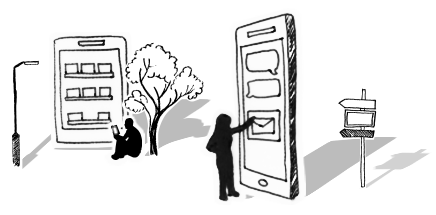




Thoughts on the Move to Customised Learning
The move to customised learning gives us more opportunity to address individual and business need that ever before.
Some years ago, when asked what I did for a living, I’d say “Computer Trainer”, or “Training Manager”. This was back in the days of 2-day Word V2 or Excel V4 Introduction courses, as well as 1-day courses in Windows itself, so to some degree the term was more applicable then. You really were “training” people who had had absolutely no exposure to computers to perform basic functions. I can still remember the gasps of awe from showing people copy and paste!
From push to pull
As computer-literacy increased, such courses became much rarer; and with greater delegate knowledge came a different emphasis. The whole paradigm was turned on its head to a pull rather than push approach; “trainees” became “learners”, “trainers” became “learning consultants”.
Rather than the consultant standing at the front of the room at the start of a course telling people what he was going to tell them, he would be asking people what they wanted to know. Delegates would therefore customise their learning to their particular needs.
This shift in approach has had a number of implications, for both learner and consultant. For learners, in most cases there is an assumption that they will come to any course with an idea of what they want to get from it. For the consultant, the implication of this is that they need to know their subject even more fully. “Sorry, that’s not covered on this course” is no longer an acceptable response!
Benefits for the business
Courses have therefore become more relevant in content and generally shorter in duration. This approach is beneficial for all involved; organisations get a greater return on their learning spend as delegates learn just what they need to do their jobs more effectively. Consultants effectively never run the same course twice, since the course content is driven by the delegates, making the consultant role more challenging and interesting.
It also means that when putting together any form of learning for a client, as a learning consultant you really need to get to know not only your subject, but the client and what they expect to gain from the learning you create for them.
Essentially, you need to understand where the client is now, what their issues are, where they want to get to and most importantly, how you will measure that the change has been successful.
The main effect however is that “the course” is now more widely understood as just a small component of the learning process. This has always has been the case, but that fact was not always recognised. Since learning is driven by the learner, this can more readily be done outside the classroom. The 70:20:10 model states that we learn:
- 70% on the job
- 20% from other people
- 10% from courses and reading
With eLearning, webinars and of course the wealth of information available on the Internet, accessing a wide variety of resource to fulfil the 70 and 20 components of the above model is easier than ever. But the onus is on the learner to go out and find the information they need, rather than to have it provided to them.
So customised learning is now exemplified by the “J3” approach, which Afiniti uses: “Just enough, just in time and just for me”
To get the latest change tips, advice and guidance directly to your inbox, sign up to our monthly Business Change Digest.
